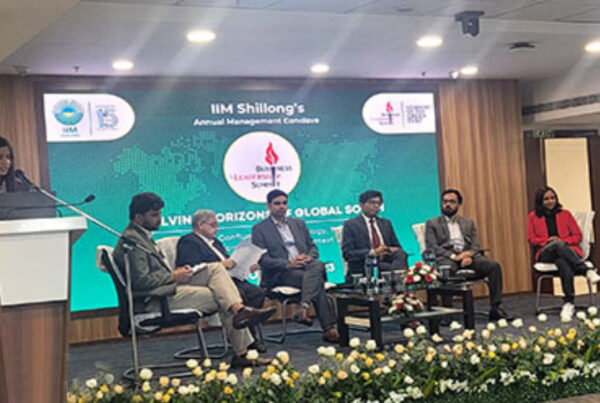Video streaming, which started as a leisure activity during the pandemic-driven lockdowns, has gained rapid traction over the last 2-3 years and has become mainstream entertainment across markets. Factors such as increase in penetration of 4G services; growth in the number of smart devices, such as connected TV; and rising Internet penetration have significantly increased the accessibility of content. The immersive platform has transformed the traditional viewing behavior.
The growth in OTT service delivery, combined with the transformation of streaming media consumption habits, necessitates a look at the key trends shaping the sector.
Robust growth in streaming consumption
The global OTT video segment is expected to record US$275 billion in revenues in 2022. Revenue is expected to grow annually by 11% (CAGR 2022-27), with the market expected to reach US$480 billion by 2027. By region, the US would be the biggest generator of revenues.
SVOD services and subscription fatigue. The shift to streaming video on demand (SVOD) has disrupted television. However, questions are arising about the sustainability of the model.
This is because, with more top media service companies launching streaming video content, the competition has intensified. As they expand globally and the markets mature, subscriber growth is slowing. Also, with time, the value proposition to users appears to be losing sheen. Frustration among consumers is growing because of having to manage multiple subscriptions, which are often expensive.
While consumption has increased, so have unique program titles. Overwhelmed by services and platforms, nearly half the audience in the US finds it tedious to locate their desired content.
Deloitte’s survey shows managing multiple subscriptions is leading users to cancel, or add and then cancel, SVOD subscription. The customer churn rate stands at 37% in the US, while it is nearly 30% in the UK, Germany, Brazil and Japan. But canceling does not mean users will not return. Users unsubscribe, and then re-subscribe when either the service is offered at a discount or new seasons of the shows they watched are added.
Varied models of offerings. Since a high churn or fluctuations doesn’t bode well for business, SVOD providers are exploring alternatives to offer a better value proposition to users. These include flexible pricing options, such as infusing/posting ads as a trade-off for lower costs or for zero costs, also known as the ad-based video on demand (AVOD) model. This could attract and retain cost-conscious consumers.
Providers are experimenting with multiple formats. These are offering gated content with pricing tiers, discounts, loyalty programs, and bundled offerings, such as including gaming or music service or another SVOD service as part of the existing subscription.
The other models gaining traction are transaction-based video on demand (TVOD) and freemium. Under TVOD, users can watch shows or movies on rent. It is a tested strategy that has been employed successfully—for example, Amazon Prime subscriptions are quite popular. Under freemium, users can avail of a basic level of service without incurring any cost. Disney+Hotstar, for instance, offers freemium content that drew high returns, especially in India.
Smart TV/CTV re-defining advertising and UX. With OTT platforms redefining entertainment and viewership, cord-cutting has gone to the next level. Connected TV or CTV is increasingly replacing the traditional linear TV in attracting the attention of advertisers.
Usage of CTV devices, such as smart TVs, gaming consoles and Internet-connected devices, is at an all-time high. It could boost the digitalization of TV, enable marketers to target the right audience, enhance the relevance of advertisements, and facilitate the measurement of data for drawing actionable insights. Advertising on CTV is efficient because the ads can be personalized and made interactive. Advertisers can expand reach beyond the level afforded by the traditional/linear TV. Also, it will lower the entry barriers for advertisers and enable several types of advertisers to leverage the medium.
As for user experience, advancements in technology only enhance it. To enhance UX, OTT service providers are coming up with new offerings, besides the regular video content and streaming. These include virtual reality, video chat, and other niche content, such as live sports.
5G technology is a game-changer regarding user experience. Platforms such as Netflix are a good example. Its web-based services and content are easy to select and, therefore, user-friendly. Leveraging 5G, OTT service providers can enrich their content library and create a more interactive user-friendly interface. 5G can upgrade the streaming of 4K videos on CTV and other smart devices, giving a boost to overall streaming experience.
Content fragmentation, bundled services, and personalization. This content distribution strategy is trending high. Focused on providing content to the audience specifically according to their taste and preferred genres, it facilitates delivery of more apt content to the audience. VOD/OTT platforms are increasingly adopting this technique to cater to a wider audience base. It helps in catering to the niche viewers. This leads to improvement in subscriber retention rate and revenues.
Subscription-based bundled services are a type of fragmented content that users can choose from. As subscription fatigue for streaming media increases among paying subscribers and OTT services become common, bundled services provide a fresh scope to engage and retain. With the OTT market becoming complex, bundled services such as Amazon Prime Video or HBO Max, and Disney’s collaboration with Marvel, ESPN, and National Geographic, are gaining in popularity.
App bundling reaps results in a price-conscious market like India. The success of the channel strategy is reflected in the consumption of bundled content. The number of bundled service users in India is expected to reach around 400 million in the next 1-2 years’ time.
Targeted catering helps OTT platforms to rake in higher revenues by increasing their subscriber base and scaling up operations. Besides building loyal audiences, it also helps broadcasters in monetizing their videos through advertisements.
Personalized viewing enhances user experience. The key attributes of personalization are offering content of choice to viewers and seamless delivery of content. It is estimated to increase conversion significantly. Netflix, for example, has pioneered the personalization of content. Based on viewing patterns, it also offers recommendations. Intuitive recommendations are a highly advanced technique for boosting engagement and consumption of content.
To conclude
OTT platforms have made it convenient for broadcasters to showcase a variety of content. They have also made content highly accessible to consumers. This has helped broadcasters strengthen their direct relationship with customers, which contributes to enhancing the brand image and brand value.
Following the pandemic, content consumption and distribution have changed forever. Internet penetration, advent of sophisticated technologies, changing lifestyles, and growing consumer consciousness, especially among the millennials and Gen Z, are the key factors shaping consumption habits.
With the rise in competition and the growing pipeline of content, the OTT market is maturing. OTT service providers must look deeper into the trends. It will enable them to gain better visibility about what else could unfold. It will also help them draw actionable insights. Leveraging these, they can tap technological advancements and understand the consumer sentiment to cater effectively and enhance the service efficiency.




